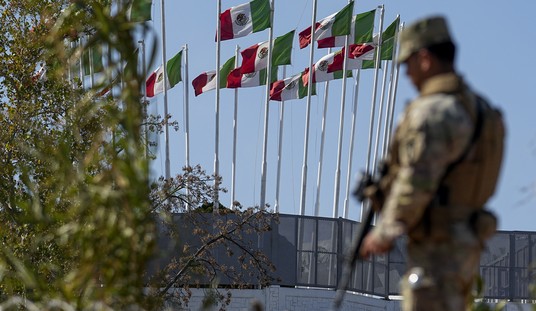You probably haven't read much commentary about this year's elections to the House of Representatives. There's a good reason for that: The majority in the Senate is up for grabs, but it's clear to everyone who follows these things that Republicans will continue to control the House. But there are lessons to be learned from this year's House races, some of them relevant beyond this election cycle.
The House math is fairly simple. Republicans won 234 House seats in 2012 and Democrats 201. There are three vacant seats now, but neither party has gained a seat in a special election or by a party switch.
Put that together with the fact that we've become a straight-ticket voting nation now, no matter how many voters swear they're Independents. In 2012, 409 of the 435 congressional districts voted for the presidential candidate and House candidate of the same party. Only 26 voted split tickets. That's the lowest number since the election of 1920.
Also in 2012, 226 House districts voted for Mitt Romney and only 209 for President Obama. That's when Obama's national job approval was 50 percent. Now it's 41 percent. House Democrats have a competent campaign committee and chairman, but they have been facing an uphill slog.
As I've noted before, Republicans have an edge in House districts partly due to partisan redistricting but mostly because of demographic clustering. Heavily Democratic groups -- blacks, Hispanics, gentry liberals -- are heavily clustered in relatively few heavily Democratic districts. Republican voters are more evenly spread around the rest of the country.
The result is that Republicans are likely to gain House seats. A net gain of eight puts them at 242, the number they won in 2010 and their highest number since the election of 1946. A net gain of nine or more would give them their largest House majority in two-thirds of a century.
That wouldn't mean that support for the Republican Party is at a 70-year high. By other measures, it's weaker. Republicans won five of six presidential elections between 1968 and 1988, with an average popular vote margin of 10 percent. They've lost four of the six between 1992 and 2012, by an average vote margin of 4 percent.
Recommended
But Americans split their tickets a lot in the past. In the 1968-88 period, white Southerners usually voted Republican for president and Democratic for Congress.
And starting with a few Republican suburban House members in the 1950s, and continuing with many more Democrats in the next three decades, members used the advantages of incumbency -- free mail to constituents, constituent services, lobbying for local businesses and nonprofits -- to make enough friends to survive elections when their party was getting whomped at the top of the ticket.
So between 1958 and 1992 in every election, Democrats won at least 243 House seats -- more than Republicans have since 1946 -- and as many as 295. Their low points came in 1972 and 1984, when Richard Nixon and Ronald Reagan carried 49 states and more than 300 congressional districts.
Seemingly eternal Democratic control was the collective result of the efforts of individual Democratic political entrepreneurs, who voted with party leadership on procedure but not on locally sensitive roll calls. They used the advantages of incumbency to maximum advantage and worked their districts hard every weekend. Republicans, in contrast, had relatively few such political entrepreneurs, in part because they couldn't count on party fundraisers, who reminded contributors that Democrats controlled -- and would seemingly always control -- every committee and subcommittee chairmanship.
All that's changed. Neither party seems to be producing new political entrepreneurs capable of winning repeatedly on unfriendly partisan territory. Old-timers who did that successfully for years have been picked off in bad years for their party, like Republican 30-year incumbent Jim Leach in 2006 and Democratic 28-year incumbent Rick Boucher in 2010.
Half a century ago, many political scientists wanted America to have one clearly liberal and one clearly conservative party. Most probably thought the liberal side would usually win.
Well, their prayers have been answered. We now have two ideologically distinct political parties. The liberal party seems to have an edge, though not an overwhelming one, in presidential elections. But the conservative party, to the dismay of many political scientists, has an edge, though again not overwhelmingly, in elections to the House of Representatives.
That advantage may not prevail through the whole 10-year redistricting cycle. But it will this year.
























Join the conversation as a VIP Member